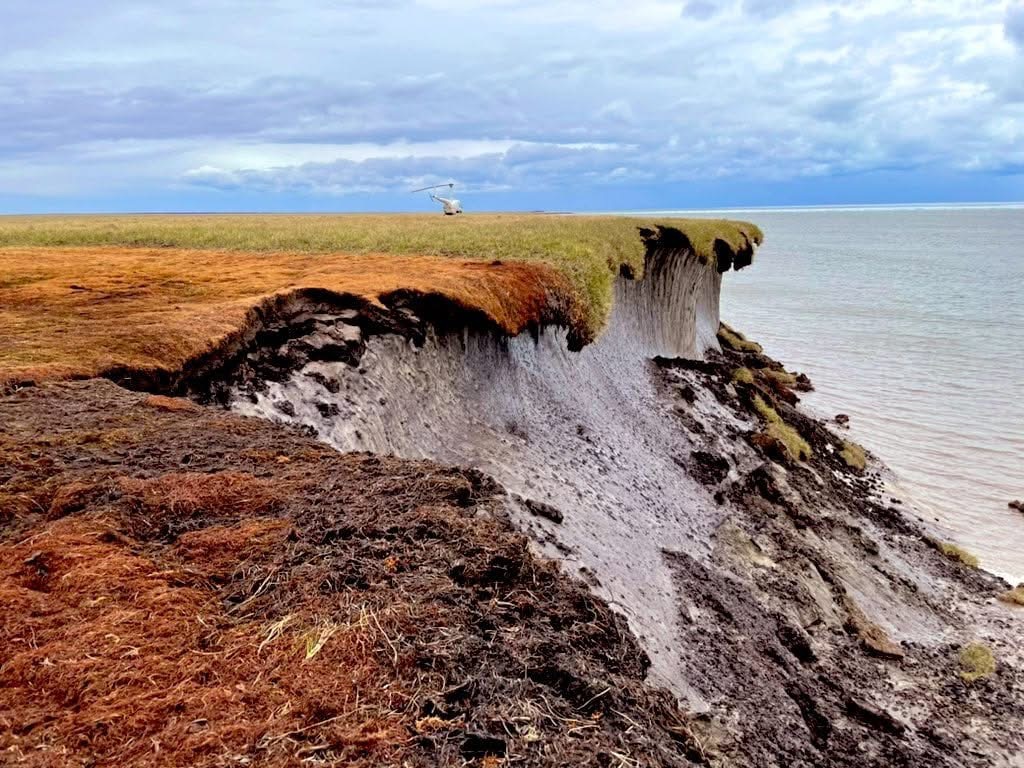
Ground ice exposure with tundra vegetation overhang at the Beaufort Sea Coastline nearby to Drew Point, Alaska, July 2021 (PC: Melissa Ward Jones).
“…when ice is present underground, it occupies space. The melting of this ice leads to ground subsidence, which creates issues such as coastal erosion, infrastructure instability, agricultural changes, landslides, and more.”
Background and Research Expertise
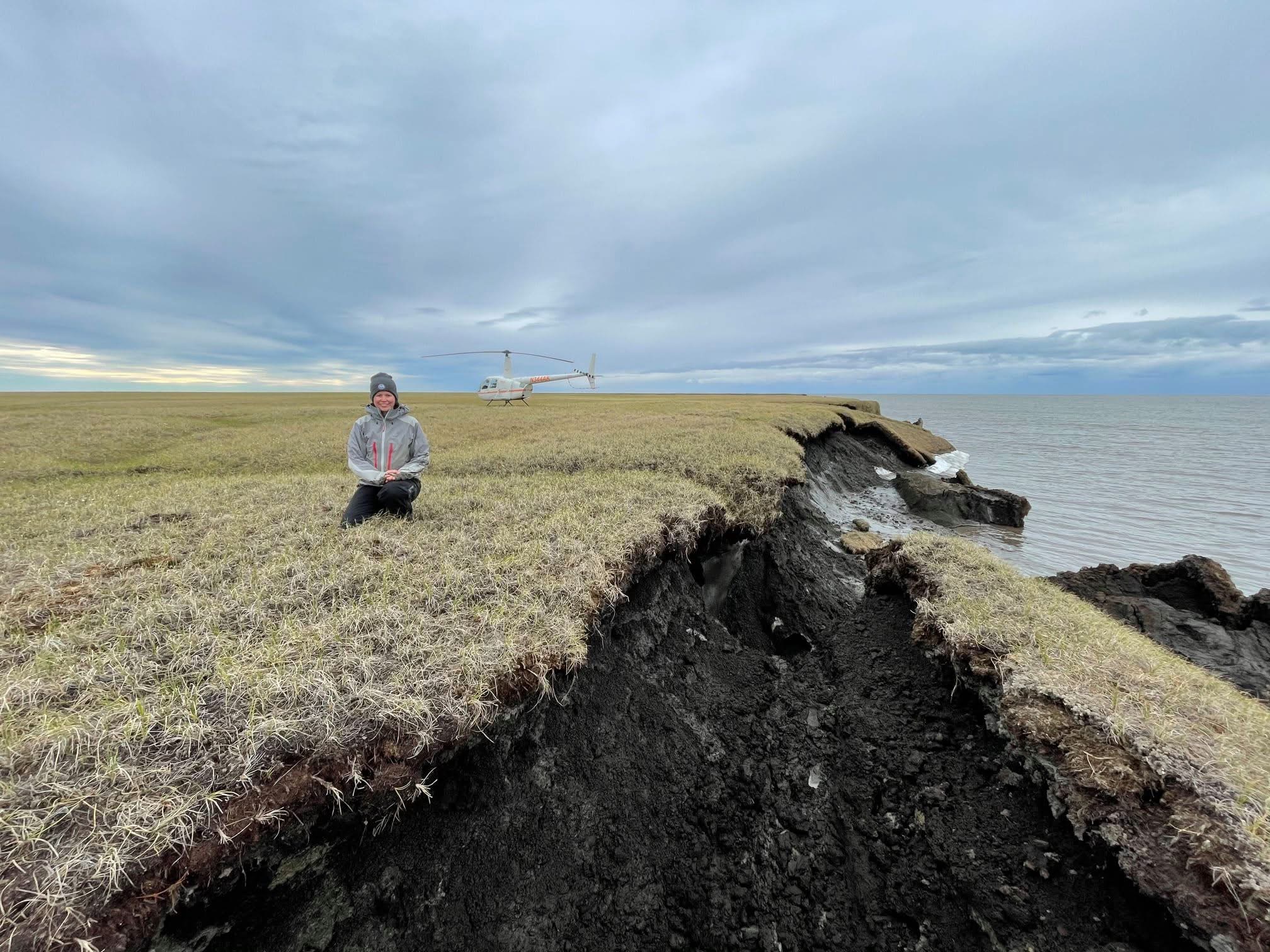
Melissa Ward Jones at the bluff edge at Drew Point, Alaska next to a collapse permafrost block, July 2021 (PC: Ben Jones).
Like many researchers, Dr. Melissa Ward Jones found Arctic science by accident. As a first-generation college student and the only person in her family with an advanced degree in the natural sciences, Ward Jones found inspiration from the Kratt Brothers TV programs she watched growing up. She initially considered pursuing biology until realizing that genetics didn’t interest her, and she became attracted to the geography program. Ward Jones received her Bachelor’s degree in geography before specializing in geomorphology and permafrost studies for her Master’s and Doctoral research at McGill University in Montreal, Canada.

Field crew at the bluff edge at Drew Point, Alaska where permafrost blocks have detached but not yet toppled into Arctic Ocean, July 2016 (PC: Ben Jones).
Her interest in Arctic research was sparked by her graduate supervisor, Dr. Wayne Pollard, who spent much of his career conducting research in the polar regions. Ward Jones currently works as a Research Assistant Professor and Director of the Water and Environmental Research Center at the University of Alaska Fairbanks where she studies permafrost geomorphology.
Ward Jones’ research explores how environments evolve and respond to the melting of ice-rich landscapes and landforms. She explains that when ice is present underground, it occupies space. The melting of this ice leads to ground subsidence, which creates issues such as coastal erosion, infrastructure instability, agricultural changes, landslides, and more. Ward Jones and her team emphasize the importance of environmental science by connecting scientific results with human and economic impacts.
Dataset Highlight
This collaborative research involved analyzing a 1.5 km stretch of coastline during the 2018 and 2019 open water seasons by utilizing high-resolution remote sensing datasets from satellite, airborne, and UAV imagery at Drew Point, Alaska. Drew Point is an unlithified ice-rich permafrost coastline and is one of the most rapidly eroding coastlines in the Arctic (with an average erosion rate of 19 m/year from 2007-2019), making it an incredibly important region to study, especially as new ports and infrastructure are developed in Alaska.
The dataset that resulted from this research was published at the Arctic Data Center:
- Melissa Ward Jones, & Benjamin Jones. (2025). Derived coastlines and toppled permafrost blocks at Drew Point, Beaufort Sea Coast, Alaska, 2018 and 2019. Arctic Data Center. doi:10.18739/A2N873213.
The dataset is further discussed in their paper published in Scientific Reports:
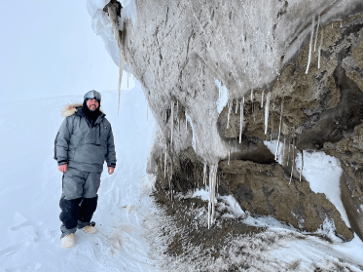
Ben Jones at the base of the bluff at Drew Point during spring fieldwork, May 2023 (PC: Mikhail Kanevskiy).
- Ward Jones, M.K., Jones, B.M., Nitze, I. et al. Annual and sub-seasonal dynamics of a rapidly eroding permafrost coastline along the Beaufort Sea in northern Alaska. Sci Rep 15, 19798 (2025). https://doi.org/10.1038/s41598-025-04753-3
Results show that within the 2007-2019 record, 2019 exhibited the highest mean erosion rate of 34.5 m, while 2018 had the second lowest at 11.2 m. This dataset highlights the importance of spatiotemporally high-resolution data needed for understanding coastal change in the Arctic and emphasizes the role of wind and air temperature in driving permafrost coastline erosion. Teamwork and collaboration were vital components of the work, with Melissa’s husband Dr. Ben Jones having completed the actual data collection and initial post-processing. The team also collaborated with researchers from the Alfred Wegener Institute for Polar and Marine Research who were also collecting data in the area. Other study collaborators include researchers from b.geos and Sandia National Laboratory.
Working in the Arctic
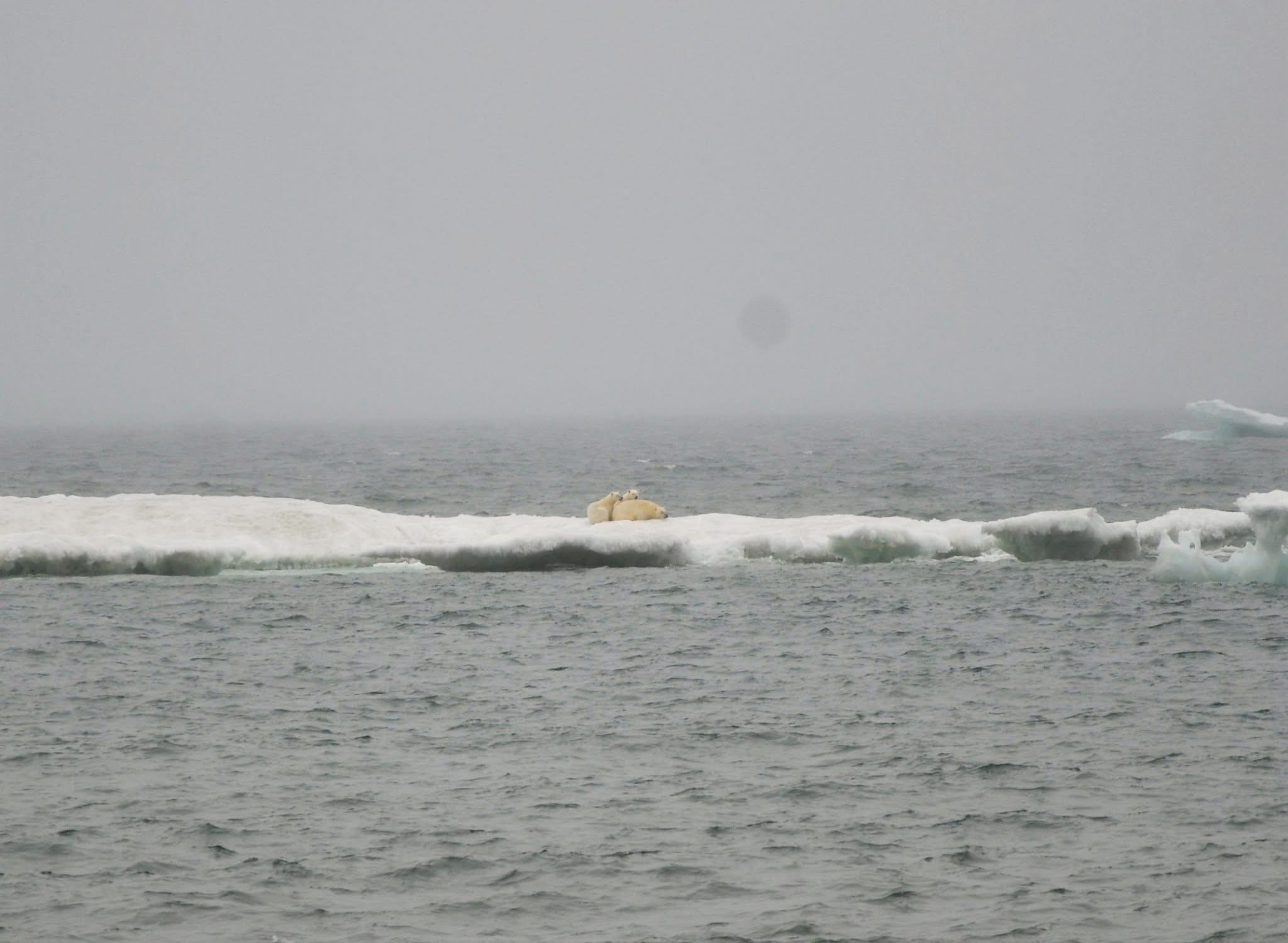
Polar bear sow and her two cubs on an ice floe in Utqiaġvik, Alaska, located ~70 miles from Drew Point, August 2022 (PC: Melissa Ward Jones).
Despite noting the typical challenges that immediately come to mind when thinking about remote research, like equipment breaking or weathering out (Ward Jones’ record is 14 straight days), Ward Jones had something else on her mind. When asked about the most challenging aspects of working in the Arctic, she explained the complications of traveling on chartered aircrafts that have weight limitations. Just days after our interview, Ward Jones would be making decisions about what to bring and what to leave behind to comply with these limitations for her 2025 field season—an almost impossible decision when every piece of equipment feels essential.
Ward Jones also emphasized that although technological advancements are exciting and important, often the most reliable tools are those that have been around the longest and have stood the test of time. In many cases, older equipment offers a level of simplicity, durability, and proven effectiveness that newer, complex technologies have yet to match. That said, Ward Jones mentioned that drone mapping has been a game changer for her research, especially for data collection in regions that aren’t easily accessible.
Living in the Arctic
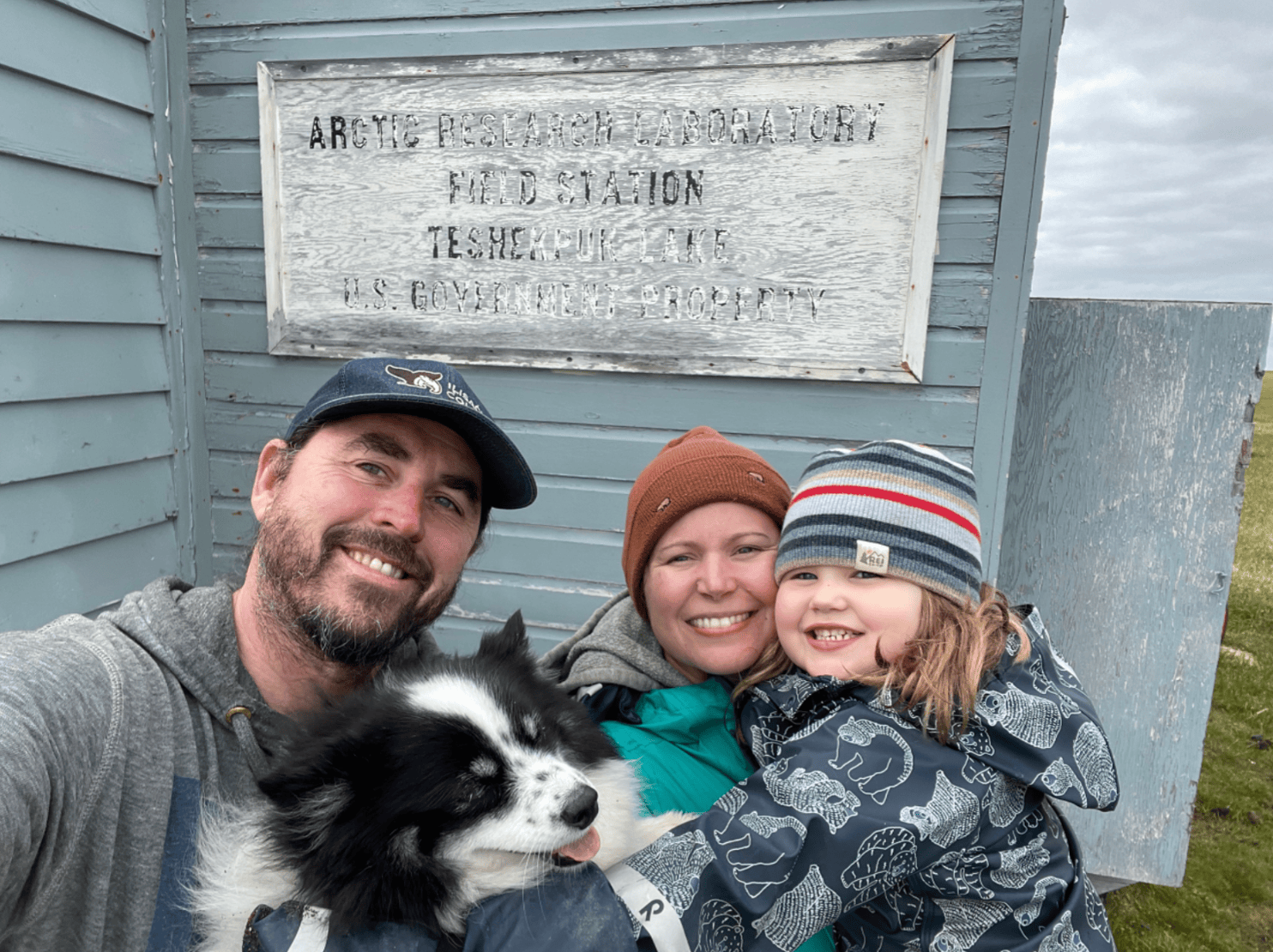
Melissa Ward Jones’ family conducting field work around the Teshekpuk Lake Observatory, a frequent logistical base for fieldwork out of Drew Point. From left to right, Ben Jones, Kaya, Melissa Ward Jones and Lillian Jones, July 2024 (PC: Ben Jones).
Ward Jones loves living in the Arctic just as much as she loves working in the Arctic. When asked about the most rewarding aspect of her career so far, she recounted the amazing places she’s traveled, unique life experiences that only come with researching such remote regions, and blending her love for science with family time.
Encouraging Future Scientists
Getting involved in Arctic research can feel intimidating, especially when you’re early in your career or when it feels too late to switch disciplines. To overcome this hurdle, Ward Jones emphasizes asking for help and seeking out opportunities, especially in the field, whenever possible. Students can seek out these opportunities during their undergraduate careers instead of waiting for graduate school. Additionally, she notes that conducting field research requires a certain mindset where adaptability and the ability to pivot is key.
How is the Arctic Data Center Useful for Researchers?
 When asked how the Arctic Data Center (ADC) has been helpful throughout her career, Ward Jones immediately gave thanks to ADC Data Curator, Justin Kadi, for his help processing her dataset on time and ensuring it was available before her related Scientific Reports paper was published. She further noted that the ADC does a nice job directing researchers to the necessary resources, provides streamlined instructions for data preparation, and takes care of the repetitive tasks that come along with data management and submission.
When asked how the Arctic Data Center (ADC) has been helpful throughout her career, Ward Jones immediately gave thanks to ADC Data Curator, Justin Kadi, for his help processing her dataset on time and ensuring it was available before her related Scientific Reports paper was published. She further noted that the ADC does a nice job directing researchers to the necessary resources, provides streamlined instructions for data preparation, and takes care of the repetitive tasks that come along with data management and submission.
Stay tuned for a future blog post about Ward Jones’ work on the Permafrost Grown project!
Written by Nicole Greco
Community Engagement & Outreach Coordinator
